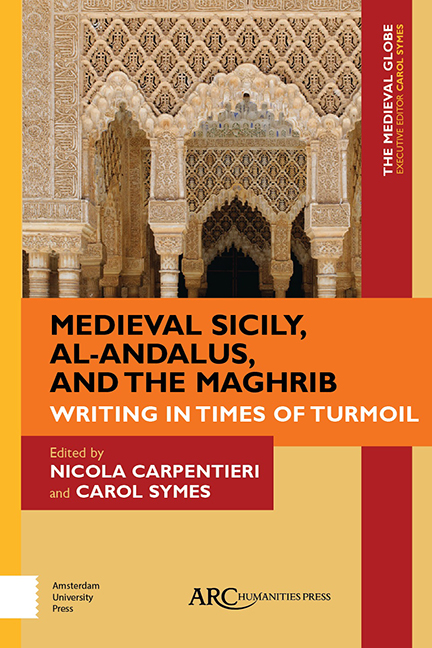Book contents
- Frontmatter
- Contents
- Acknowledgements
- Introduction
- The Indiculus luminosus and the Creation of a Ninth-Century Prophetic Conflict between Christianity and Islam
- Empire and Caliphate in the Life of John of Gorze
- The Writing of Munāẓarāt in Times of Turmoil: Disputations inFatimid Ifrīqiya
- Messaging and Memory: Notes from Medieval Ifrīqiya and Sicily
- “And God Dispersed Their Unity”: Historiographical Patterns in Recounting the End of Muslim Rule in Sicily and al-Andalus
- A Wondrous Past, a Dangerous Present: The Egyptian Temple of Akhmīm and the Martorana Church in Palermo, as Seen through Ibn Jubayr’s Travelogue
- How Does a Moorish Prince Become a Roman Caesar? Fictions and Forgeries, Emperors and Others from the Spanish “Flores” Romances to the Lead Books of Granada
- Index
Empire and Caliphate in the Life of John of Gorze
Published online by Cambridge University Press: 20 November 2020
- Frontmatter
- Contents
- Acknowledgements
- Introduction
- The Indiculus luminosus and the Creation of a Ninth-Century Prophetic Conflict between Christianity and Islam
- Empire and Caliphate in the Life of John of Gorze
- The Writing of Munāẓarāt in Times of Turmoil: Disputations inFatimid Ifrīqiya
- Messaging and Memory: Notes from Medieval Ifrīqiya and Sicily
- “And God Dispersed Their Unity”: Historiographical Patterns in Recounting the End of Muslim Rule in Sicily and al-Andalus
- A Wondrous Past, a Dangerous Present: The Egyptian Temple of Akhmīm and the Martorana Church in Palermo, as Seen through Ibn Jubayr’s Travelogue
- How Does a Moorish Prince Become a Roman Caesar? Fictions and Forgeries, Emperors and Others from the Spanish “Flores” Romances to the Lead Books of Granada
- Index
Summary
JOHN OF VANDIÈRES, a monk from the abbey of Gorze in Lotharingia, travelled to Córdoba in 953 as an envoy for the future Emperor Otto I, then king of the East Franks (r. 936– 973). The three years he spent on this mission were immortalized in the final twenty-one of the surviving 136 chapters of the anonymous Vita Iohannis abbatis Gorziensis (Life of John of Gorze). Scholarship on this text generally concerns either John's career at Gorze or his mission to Córdoba, with little effort to tie these topics together. This article presents a close reading of the description of John's time in Córdoba, revealing the political context of the text's composition and its concern with strengthening Otto II's imperial messaging within his turbulent realm— rather than his attempts to engage in competition with foreign powers such as the caliphate. It also demonstrates that John's Vita relies on an Arabic source to explain his diplomatic work in Córdoba and utilizes literary tropes from the adab genre, adopted from Persian into Arabic literature in the third/ ninth century, in order to portray John and the king he served as significant political actors with influence well beyond Gorze and the Ottonian realm.
The Vita Iohannis exists in one manuscript (Paris, Bibliothèque nationale de France lat. 13766) thought to date from the late tenth or eleventh century. Its attribution to John, abbot of Saint-Arnould in Metz— initially suggested by the Maurist scholar Jean Mabillion (1632– 1707)— has generally been accepted, placing the writing of the text in the 970s. However, there is no consensus about how or in what order the Vita was composed. Some scholars have argued that it was written in distinct stages and that the chapters concerning John's visit to Córdoba were based on a pre-existing dossier drafted by an eyewitness. It is certainly apparent from the text's internal prefaces and structure that it was not written in one continuous stream; however, this need not mean that the Vita is a disjointed pastiche. Indeed, other scholars contend that the text displays a strikingly cohesive style marked by long speeches and dialogues.
- Type
- Chapter
- Information
- Medieval Sicily, al-Andalus, and the MaghribWriting in Times of Turmoil, pp. 39 - 58Publisher: Amsterdam University PressPrint publication year: 2020



